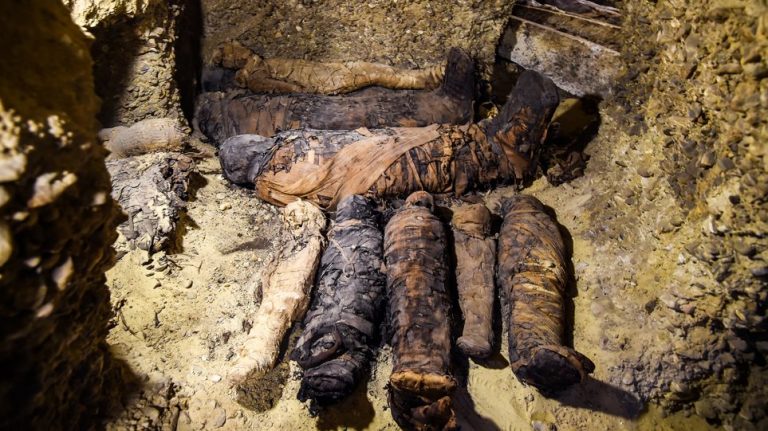She was the fabled queen of ancient Egypt, immortalized over thousands of years as a beautiful seductress. But, despite her fame, Cleopatra’s tomb is one of the great unsolved mysteries.
Some believe she was buried in Alexandria, where she was born and ruled from her royal palace, a city decimated by the tsunami of 365AD. Others suggest her final resting place could be about 30 miles away, in the ancient temple of Taposiris Magna, built by her Ptolemaic ancestors on the Nile Delta.
Now two mummies of high-status individuals who lived at the time of Cleopatra have been uncovered at Taposiris Magna, a discovery that it is being described as “sensational” because it shows the importance of a necropolis that is being linked to her by the latest finds.
Although the burial chamber had been undisturbed for 2,000 years, the mummies are in a poor state of preservation because water had seeped through. But crucial evidence reveals they were originally completely covered with gold leaf, a luxury afforded only to those from the top tiers of society. Perhaps these two individuals had interacted with Cleopatra herself, archaeologists suggest.
The opening of the first-ever intact tomb found at Taposiris Magna was witnessed by cameras for a new Channel 5 documentary, The Hunt for Cleopatra’s Tomb, to be screened on Thursday.
Libyan Parliament officially authorizes Egypt to “militarily intervene”
The enduring mystery of Alexander the Great’s final resting place
Read more: The Guardian
Ask me anything
Explore related questions





